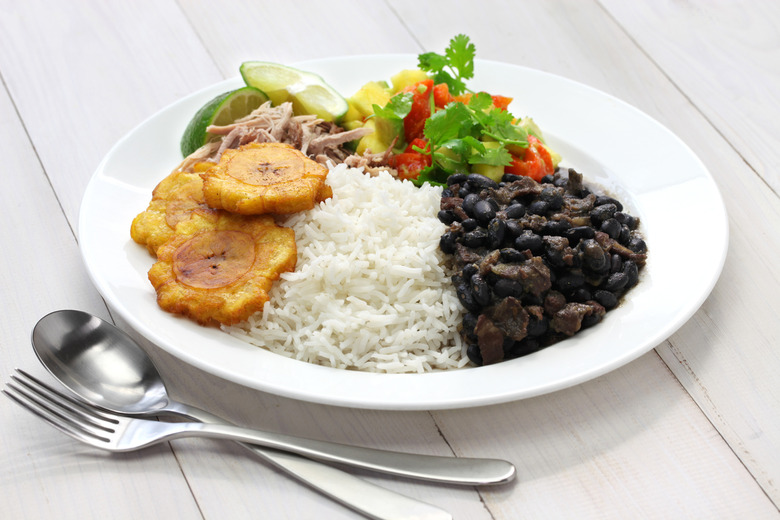Why Rice And Beans Are So Popular In South America (And Why You Should Be Eating Them)
The Spanish and Portuguese brought over long-grain rice to South America, where it later became a staple grain and a food on which low-income people could readily exist. According to a book by Maria Baez Kijac, in Brazil, it's customary for both the rich and poor to consume rice and beans every day, and in Colombia and Ecuador, rice is served as a side dish with beans or soup.
Although rice and beans started in South America as a popular dish due to its being so inexpensive, it has evolved into a key part of cuisine in many countries. And in lieu of fast or processed food, it would probably benefit Americans to consume more of this South American staple. The carbohydrates in rice are a good energy source, and rice's other benefits include being cholesterol-free, helping with high blood pressure, and its inherent vitamins and minerals, such as vitamin D, calcium, and iron.
Beans are also a healthful food according to WebMD, which says the latest dietary guidelines recommending increasing bean consumption to three cups every week. Many health issues stem from being overweight, and though the calorie content of beans is similar to that of meat, the former has more fiber and water content (and very little fat), making consumers feel fuller more quickly. The average American consumes about 15 grams of fiber a day, while the recommended daily dose for adult women is 21 to 25 grams (and 30 to 38 grams for adult men). WebMD says one cup of cooked beans provides almost half of the recommended daily amount for women.
Many countries in South America are reaping the added health benefits of eating more rice and beans, so maybe the United States should take a page out of their book and embrace the dish more often.
